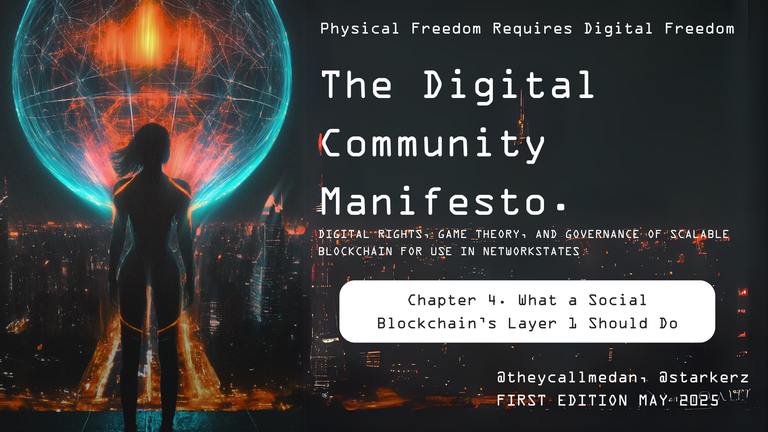Chapter 4 – What a Social Blockchain’s Layer 1 Should Do - Audio Version
Chapter 4 – What a Social Blockchain’s Layer 1 Should Do
The Layer 1 should be as simple and as boring as it possibly can be. That’s what scales

Introduction
Layer 1, also known as the Base Layer is the basis for immutability. Here is where decentralization takes place due to the node system. It also includes block time, the consensus mechanism deployed, programming languages, and rules pertaining to the network's core operations.
Layer 1 is the foundational tier of a censorship-resistant, community-governed blockchain. It underpins all core functions such as account creation, historical data storage, governance voting, and transactions that must remain immutable and easily retrievable by anyone. The guiding principle is to keep Layer 1 as simple and lightweight as possible, so it can:
- Be run by many independent operators without prohibitive hardware.
- Scale to accommodate network growth without becoming unmanageably large.
- Remain easily fork-able so a community can remove or “zero out” abusive oligarchs or malicious stakeholders by super majority consensus, however that consensus may be reached for each blockchain.
This approach contrasts with many other chains that overburden their base layers, often leading to high fees, low throughput, or compromised decentralisation. Below is an outline of which features belong on Layer 1 and why.
▶️ 3Speak
